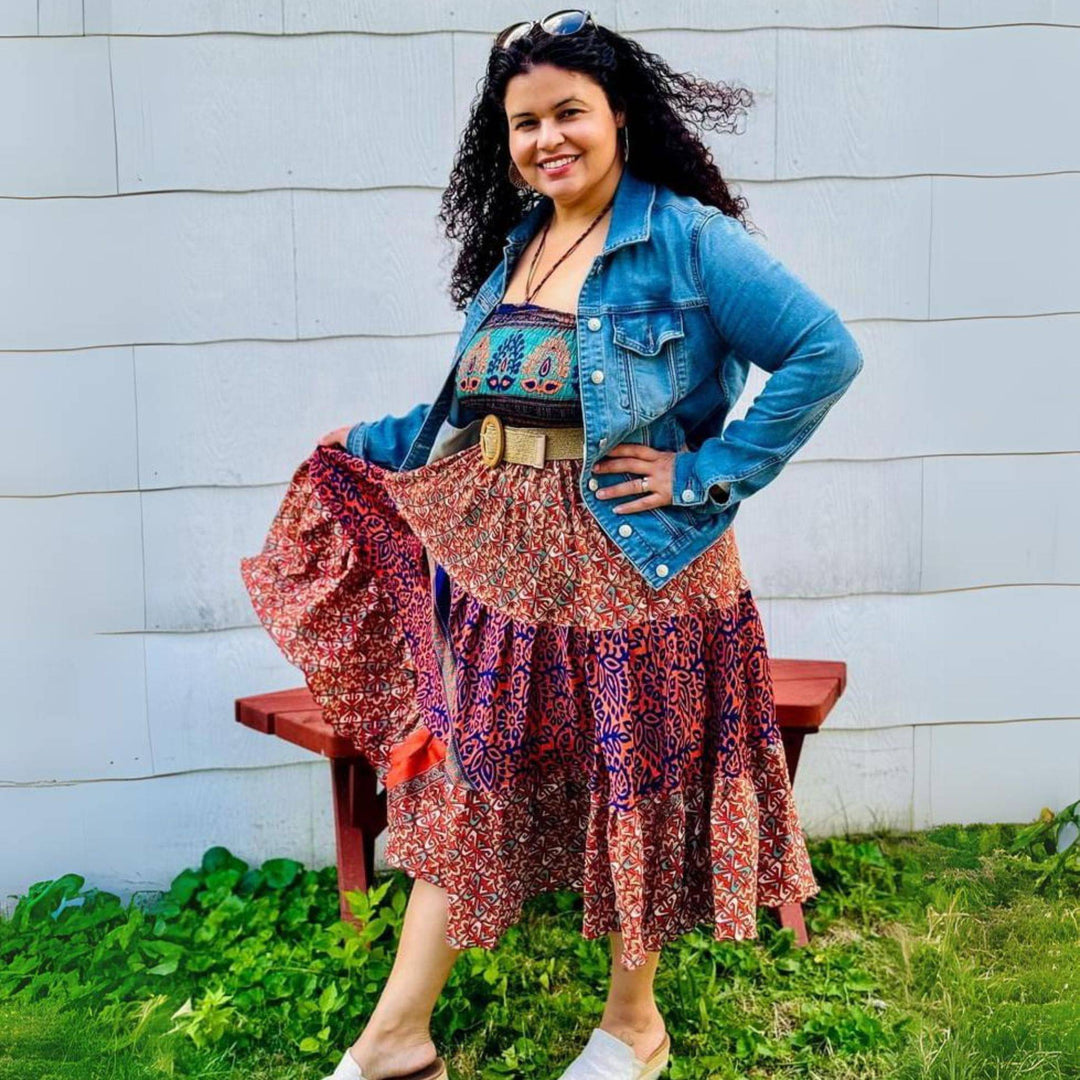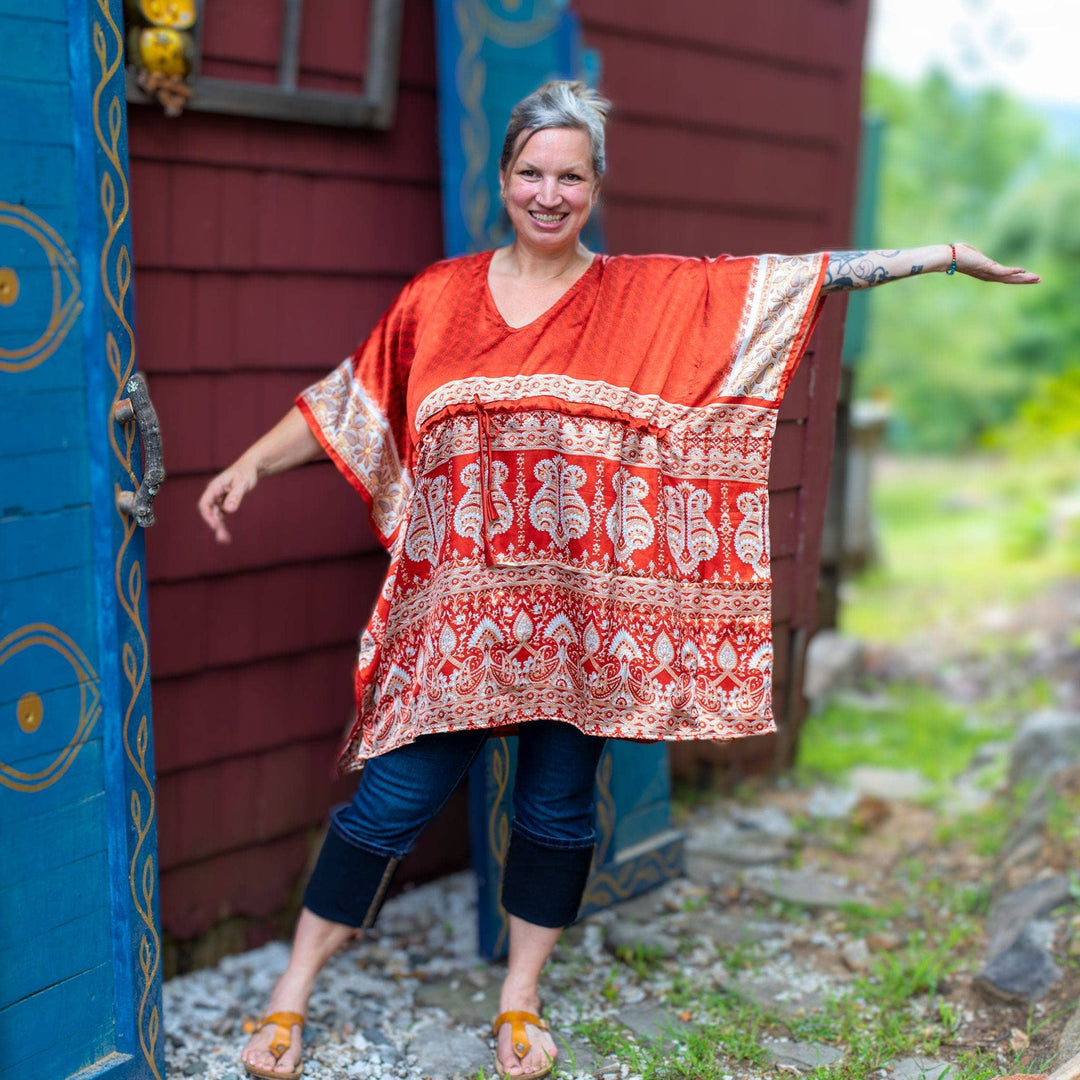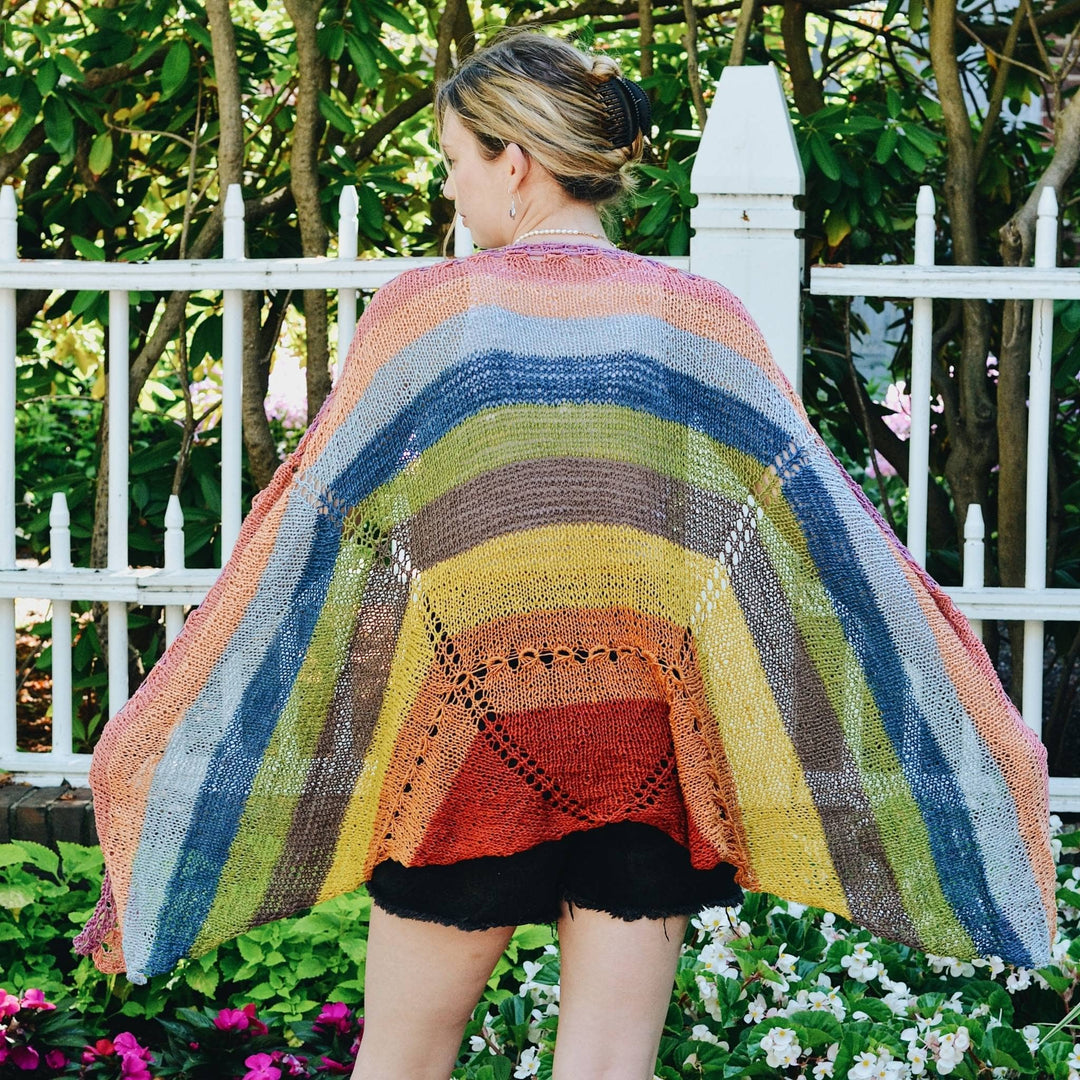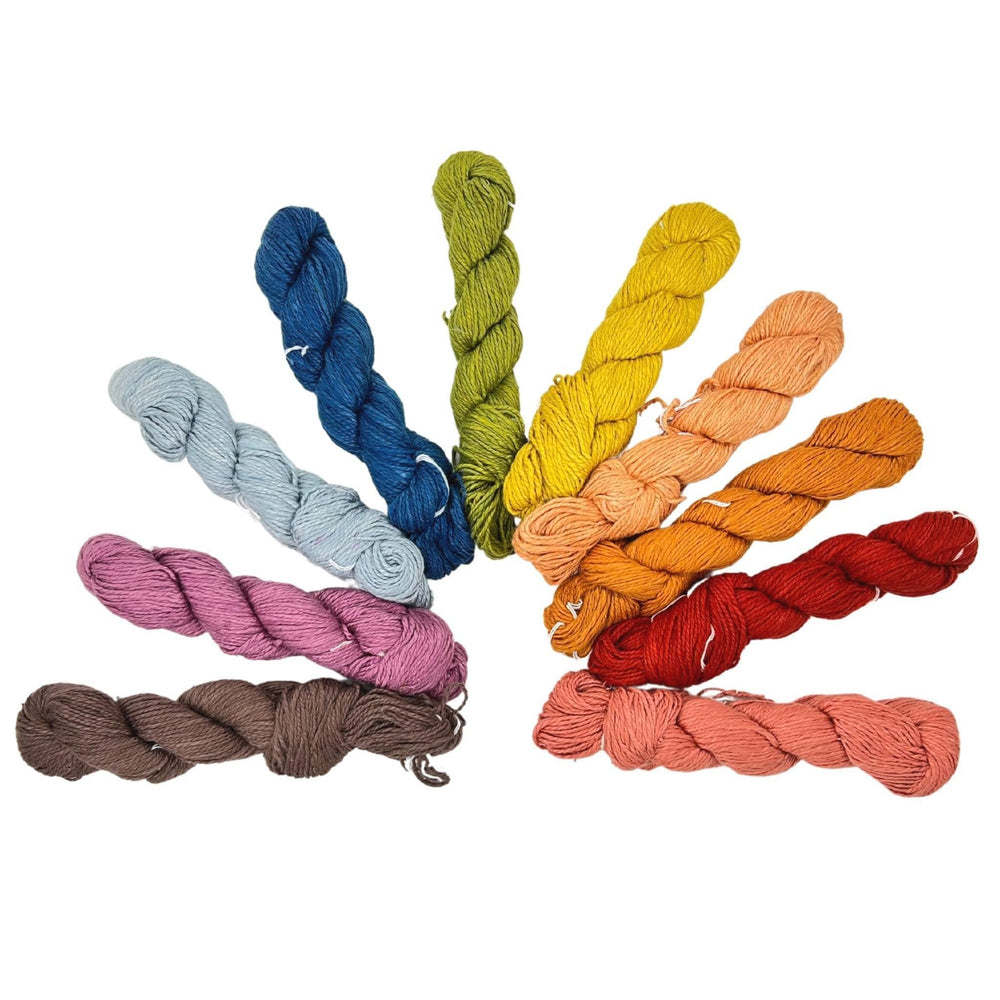Written by Kate Curry
This Celtic Yarn Tree of Life is made out of totally recycled yarn, following with the traditional meaning behind the Celtic symbol; harmony and balance. This is a great craft for leftover yarn! :)
Material List
- Yarn of your choice (my Darn Good Yarn recommendations are below)
- Scissors
- 10" Craft Circle (I'm using a 10 inch metal one I found on Amazon, but wood or plastic will work!)
Choosing Your Yarn
Choosing the yarn for your tree is important. I made this craft with 3 different types of our yarn to give you an idea of how the project works up in each case.

Banana Fiber Yarn
Banana fiber is a unique yarn that I love to use to add a little quirk to my crafting. Not many have heard of it and even fewer people have ever used it!

- Pros: Thicker branches with less strands. Texture is a nice plus!
- Cons: Harder to tie smaller knots.
Lace Weight Yarn
Lace weight is an ultra silky, thin yarn that is great for showing off intricate details like lace. We also have sparkle lace weight if you want a little shimmer for your WIP!

- Pros: You can make more delicate branches with the thinner yarn, as well as cleaner looking knots. Sparkle is cute, too!
- Cons: You need more yarn to get a thick trunk and the yarn is easily tangled in comparison to the thicker yarns used.
Worsted Weight Yarn
Worsted weight is my preferred choice for this craft! Our worsted weight is so soft and the colors are gorgeous!

- Pros: Good texture, not too thin or thick. Easy to tie and holds braids and twists better than the other two yarns.
- Cons: I don't have any for this yarn. 😍
With that, let's get started!
Step-by-Step Procedure
Step One: Cut Your Yarn
I cut my yarn long enough to ensure that I would have enough to twist and connect with my circle, which for my circle, was 40 inches. I cut one strand that length and then used it as my ruler for my other strands. I cut 20 strands to achieve the thickness I wanted for my tree while using our worsted weight yarn. You can always cut more or less for your desired size.
For my banana fiber yarn tree, I used 16 strands that were 40" in length
For my lace weight yarn tree, I used 70 strands that were 40" in length

Step Two: Begin Attaching The Yarn
Using a Palomar knot, attach the yarn to the bottom half of the circle. This creates two strands of yarn from one of your original strands. This also allows you to easily untie the yarn in case you want to adjust the placement or amount of yarn in certain areas of the circle.
There's nothing worse than wanting to adjust something and realizing just how awesome you are at tying permanent knots.



Repeat that with all of your cut yarn, spacing the yarn out at the base of your circle. This yarn will become the trunk of your tree.

Step Three: Create The Trunk
It's time to start shaping your tree. This tree is created trunk first.
You'll need to gather all your strands and begin to twist them together to form the trunk of the tree. This may take a few tries- so don't get frustrated. Take your time, be gentle with the yarn, and allow the yarn to move organically as you twist. Do the twisting on a flat surface so you have more control.

Step Four: Making The Branches
Once your trunk has been twisted, you will take some strands away from the trunk to create the main branches. Splitting off strands of yarn, be sure to gently twist these pieces so as to not un-twist the trunk. You can make the branches different widths to make it look more organic and natural. Once your branches are formed, tie the ends of the strands to where you want them to rest on your circle.
It will look a little shabby, but don't worry, this isn't the final result!

Now that you have the general shape of the trunk and main branches laid out, it's time to start tying the end of the strands to the circle. You'll need to tie the strands tightly, as to create the experience of stiff branches.
Divide the strands from the main branches into smaller portions and knot them into the circle with as much tension as you can to create the image of thinner branches. You may need to try this a few times to achieve the branch shapes that you want - so take your time and be patient with yourself!

Tip: Try tying some branches at different areas of the circle to create safe tension (I did one tight knot at the top, and one on each side.) This helps keep tension and stops the trunk or branches from unraveling as easily. :)
Step Five: Wrapping The Ends
After you're done tying the branch ends around the circle, you will have hanging loose threads. Wrap those loose ends around the circle. This not only gives your circle a clean look, but if you ever see a branch drooping (or you want to adjust the shape) you can easily unwrap the strand and tighten it up.


If there's any extra yarn after you've wrapped your circle, you can snip it off or leave it for some texture.

I hope you love this tutorial!
XOXO
Kate
 Rewards
Rewards





















